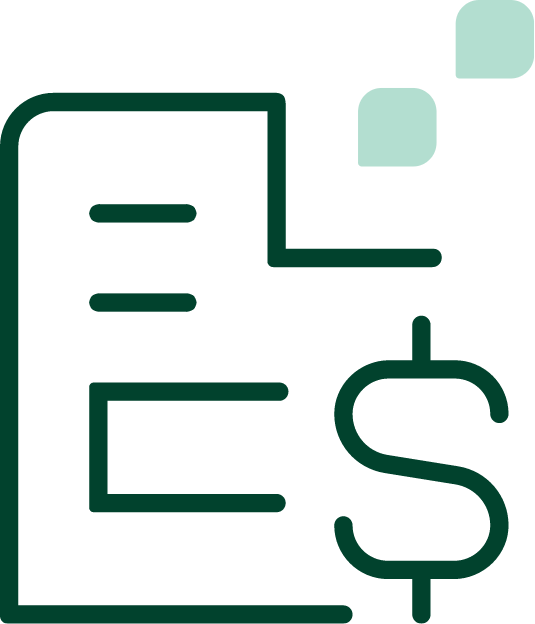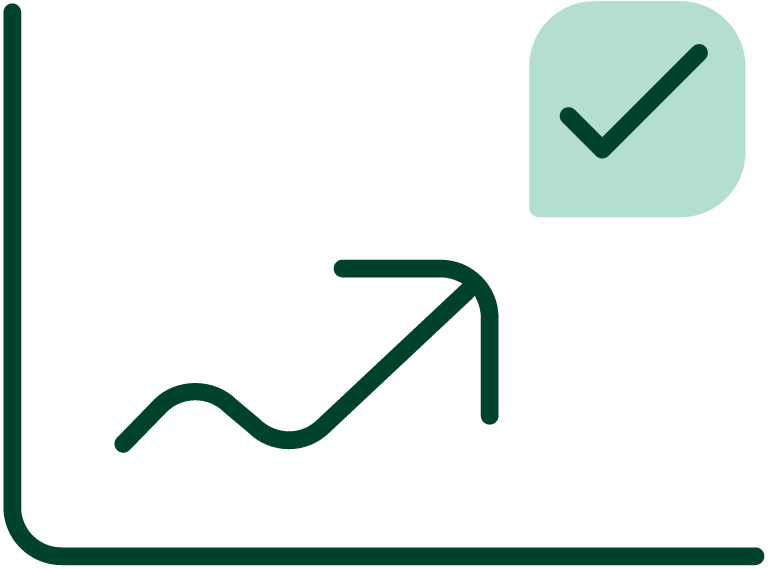A final notice letter represents the last formal communication a business sends to a customer before escalating an unpaid debt to more serious collection efforts or legal action. This critical document serves as the culmination of your accounts receivable collection process, indicating that previous payment reminders have gone unheeded and that your company is prepared to take stronger measures to recover the outstanding amount. Unlike earlier payment reminders that might maintain a more cordial tone, a final notice letter conveys urgency and seriousness, clearly communicating that the customer has reached the end of your standard collection process.
What is a Final Notice Letter?
A final notice letter for unpaid invoices is a formal written communication that represents your last attempt to collect payment through standard means before pursuing more aggressive collection tactics. This document serves as both a stern reminder of the customer’s payment obligation and a clear warning about the consequences of continued non-payment. The final notice collection letter typically follows a series of previous, increasingly urgent payment reminders that the customer has failed to address.
The primary purpose of a final notice letter before legal action is to give the customer one last opportunity to settle their debt voluntarily before you implement more serious measures such as:
- Referring the account to a third-party collection agency
- Reporting the delinquency to credit bureaus
- Placing the customer on credit hold
- Pursuing legal action
- Engaging in alternative dispute resolution methods
The final notice letter is also your company’s chance to collect the receivables owed to them before being forced to pursue expensive drastic measures or writing off the debt. A well-crafted final notice collection letter balances firmness with professionalism, clearly conveying the gravity of the situation without damaging business relationships unnecessarily. It’s important to understand that final notice letters are not merely administrative formalities—they often produce results because they signal to customers that the consequences of non-payment are now imminent rather than theoretical.
When and Why to Send a Final Notice Letter
The timing of a final notice letter for payment depends on your company’s established accounts receivable process, but typically occurs after multiple unsuccessful attempts to collect payment through regular invoicing and follow-up reminders. Most businesses send a final notice letter when an invoice is 60-90 days past due, though this timeframe can vary based on industry standards, customer relationship history, and the amount owed.
There are several compelling reasons to send a final notice letter:
Legal documentation: A final notice collection letter creates a paper trail demonstrating your diligent efforts to collect payment before escalating to legal action. This documentation strengthens your position should you eventually need to pursue formal collection procedures or litigation.
Last chance for voluntary payment: Many customers will prioritize payment upon receiving a final notice, especially when faced with explicit consequences like legal action, credit reporting, or service termination. Studies show that properly timed final notices can significantly improve collection rates without requiring more costly collection measures.
Preservation of customer relationships: While firm, a final notice letter provides the customer an opportunity to resolve the matter before you take actions that might permanently damage the business relationship. This represents a critical junction where customers who value the relationship but have overlooked or delayed payment can still rectify the situation.
Risk mitigation: The longer invoices remain unpaid, the less likely they are to be collected in full. A timely final notice letter helps minimize this risk by accelerating either payment or your decision to pursue alternative collection strategies.
Resource optimization: By clearly defining the end point of your standard collection process, final notice letters help your accounts receivable team operate efficiently, preventing indefinite follow-up cycles with non-responsive customers.
Legal Considerations for Final Notice Letters
When drafting a final notice letter before legal action, it’s essential to understand the legal framework governing debt collection in your jurisdiction. In the United States, for example, the Fair Debt Collection Practices Act (FDCPA) imposes significant restrictions on collection practices, though it primarily applies to third-party debt collectors rather than original creditors. Nevertheless, many states have enacted similar protections that apply to original creditors as well.
Key legal considerations include:
Accuracy requirements: Your final notice collection letter must accurately state the amount owed, the original invoice dates, and other pertinent details. Misrepresenting the debt can expose your company to legal liability and potentially invalidate your claim.
Prohibited practices: Avoid language that could be construed as harassment, intimidation, or deception. Threats that you don’t intend to follow through on (such as threatening legal action if you have no plans to pursue it) may constitute deceptive practices under various consumer protection laws.
Statute of limitations: Be aware of the relevant statute of limitations for debt collection in your jurisdiction. Sending a final notice letter for a debt that is legally time-barred could potentially reset the statute of limitations or otherwise expose your company to legal challenges.
Privacy considerations: Ensure that your final notice letter is delivered securely to the intended recipient. Disclosing debt information to unauthorized third parties could violate privacy laws in many jurisdictions.
Industry-specific regulations: Certain industries, such as healthcare and financial services, face additional regulatory requirements regarding debt collection communications. Your final notice letters must comply with these sector-specific constraints.
It’s advisable to have your standard final notice collection letter template reviewed by legal counsel familiar with debt collection laws in your jurisdiction to ensure compliance with all applicable regulations.
Key Components of an Effective Final Notice Letter
A well-structured final notice letter for unpaid invoices includes several essential elements that maximize its effectiveness while maintaining legal compliance:
Clear identification: The document should be clearly labeled as a “Final Notice” or “Final Collection Notice” to immediately convey its significance. Your company letterhead, contact information, and the date should appear prominently.
Account details: Include comprehensive information about the outstanding debt, including:
- Customer account number
- Invoice number(s) and date(s)
- Original amount(s) due
- Any applied payments or credits
- Current balance including any applicable late fees or interest
- Original payment terms
- Days past due
Payment demand: State explicitly that you are demanding immediate payment of the outstanding amount. Specify the total sum due and provide clear payment instructions, including accepted payment methods and exactly where/how to remit payment.
Payment deadline: Establish a firm, specific deadline for payment (typically 7-14 days from the date of the letter). Avoid vague language like “as soon as possible” in favor of a concrete date by which payment must be received.
Consequences of non-payment: Clearly articulate what actions your company will take if payment is not received by the specified deadline. Only include consequences you genuinely intend to implement, which might include:
- Referral to a collection agency
- Reporting to credit bureaus
- Service or supply discontinuation
- Legal action
- Additional fees or penalties
Contact information: Provide direct contact details for your accounts receivable department, including a specific person’s name when possible, along with phone number and email address to facilitate immediate communication.
Payment arrangement option: Consider including language that invites the customer to contact you immediately if they cannot pay in full, potentially opening the door to a payment plan or other resolution short of formal collection proceedings.
By incorporating these elements in your final notice collection letter template, you create a document that clearly communicates the seriousness of the situation while maintaining professional standards and legal compliance. It is very helpful to maintain a file of past due invoice emails templates that have been reviewed by your legal team so that your overdue dunning emails are always clear, conform to company policy and meet all legal requirements.
Best Practices for Sending Final Notice Letters
To maximize the effectiveness of your final notice letter for payment while preserving professional relationships, consider these best practices:
Use certified mail or traceable delivery: Send your final notice letter via certified mail with return receipt requested or through another delivery method that provides verification of receipt. This documentation proves the customer received your communication, which can be important if legal proceedings follow.
Maintain a professional tone: While your message needs to be firm, avoid language that could be perceived as threatening, insulting, or unnecessarily harsh. Professional language reinforces the legitimacy of your claim and increases the likelihood of compliance.
Personalize when appropriate: While using a final notice collection letter template ensures consistency, personalizing letters for significant customers or unique circumstances can be more effective. Reference the specific relationship history or acknowledge any previous communications about the outstanding balance.
Follow up promptly: If the payment deadline passes without response, implement the consequences outlined in your letter according to the timeline you specified. Failing to follow through undermines the credibility of future collection efforts.
Document everything: Maintain comprehensive records of all final notice letters sent, including copies of the letters themselves, proof of delivery, and notes regarding any resulting customer interactions. This documentation is invaluable should you need to escalate to legal action.
Consider timing strategically: When possible, time the delivery of final notice letters to coincide with payroll cycles or business quarter endings when businesses are more likely to have funds available for payment.
Offer digital payment options: Make it as easy as possible for customers to pay by providing multiple payment options, including immediate electronic payment methods that reduce friction in the payment process.
Training for follow-up calls: Prepare your accounts receivable team to handle incoming calls resulting from final notice letters. These conversations require balancing firmness about payment requirements with flexibility in finding solutions that facilitate collection.
By implementing these best practices for your final notice letters for unpaid invoices, your organization can increase collection rates while minimizing the need for more costly and relationship-damaging escalation steps. A well-executed final notice process represents the last, best opportunity to resolve payment issues through direct communication before entering the more adversarial phase of collections.
How Gaviti Helps Minimize Final Collection Letters
Gaviti’s accounts receivable automation platform serves as a powerful tool in reducing the need for final notice collection letters by streamlining the entire invoicing and collections process. By addressing the collection process holistically rather than treating final notice letters as isolated events, Gaviti helps businesses maintain healthier accounts receivable portfolios with fewer seriously delinquent accounts. This systematic approach not only reduces the administrative burden of managing final collections but also preserves customer relationships by resolving payment issues earlier in the process—before the more serious tone of a final notice letter becomes necessary.
Gaviti’s system addresses many of the core challenges that typically lead to payment delinquencies through several key features:
Automated Payment Reminders: Gaviti’s systematic approach to payment reminders helps catch late payments early in the collection cycle. By sending timely, consistent communications at predetermined intervals (such as 15, 30, and 45 days past due), Gaviti ensures that customers receive appropriate notifications well before a final notice letter becomes necessary. These earlier interventions significantly increase the likelihood of payment before the account reaches the critical final notice stage.
Customized Communication Workflows: Understanding that different customers may require different approaches, Gaviti allows businesses to create tailored communication sequences based on customer segments, invoice amounts, or historical payment behaviors. This personalization, which mirrors the best practices mentioned earlier for final notice letters, ensures that each customer receives the most effective type of communication for their specific situation, increasing response rates throughout the collection process.
Centralized Customer Information: Gaviti maintains comprehensive records of all customer interactions, payment histories, and communication preferences in one accessible location. This centralization eliminates the information gaps that often lead to invoices going unpaid until they require final notice letters. With this 360-degree view of customer accounts, A/R teams can proactively identify customers who may need special attention before they become seriously delinquent.
Real-Time Analytics and Aging Reports: The platform’s powerful analytics capabilities provide immediate visibility into aging accounts, allowing A/R teams to identify concerning trends before they develop into significant problems. These insights enable proactive intervention strategies that can address payment issues when they’re still manageable, rather than waiting until a final notice letter becomes the only remaining option before legal action.
Payment Facilitation: Making payment easy is crucial for successful collections and Gaviti does this with it’s Customer Facing Payer Portal. This reduces friction in the payment process, making it more likely that customers will resolve outstanding balances before reaching the final notice stage.
Performance Tracking: Gaviti’s reporting capabilities allow businesses to measure the effectiveness of their entire collection strategy, including how often accounts progress to the final notice stage. This data enables continuous refinement of collection approaches, helping companies identify which strategies most effectively prevent escalation to final notices.
Interested in learning more? Schedule a live demo of Gaviti!





















